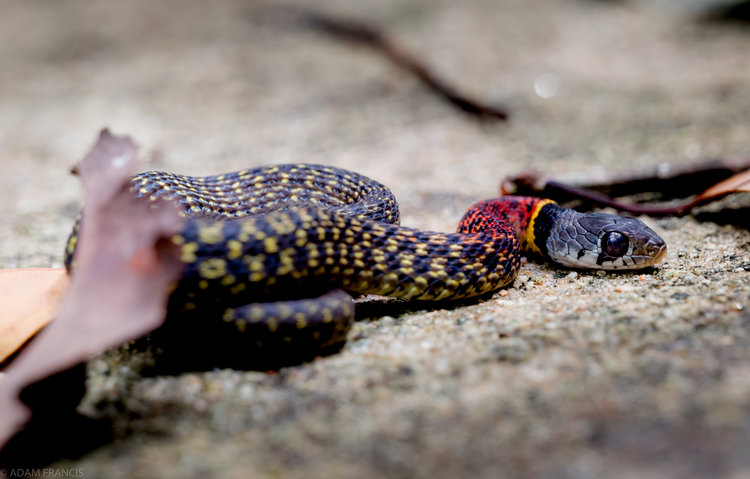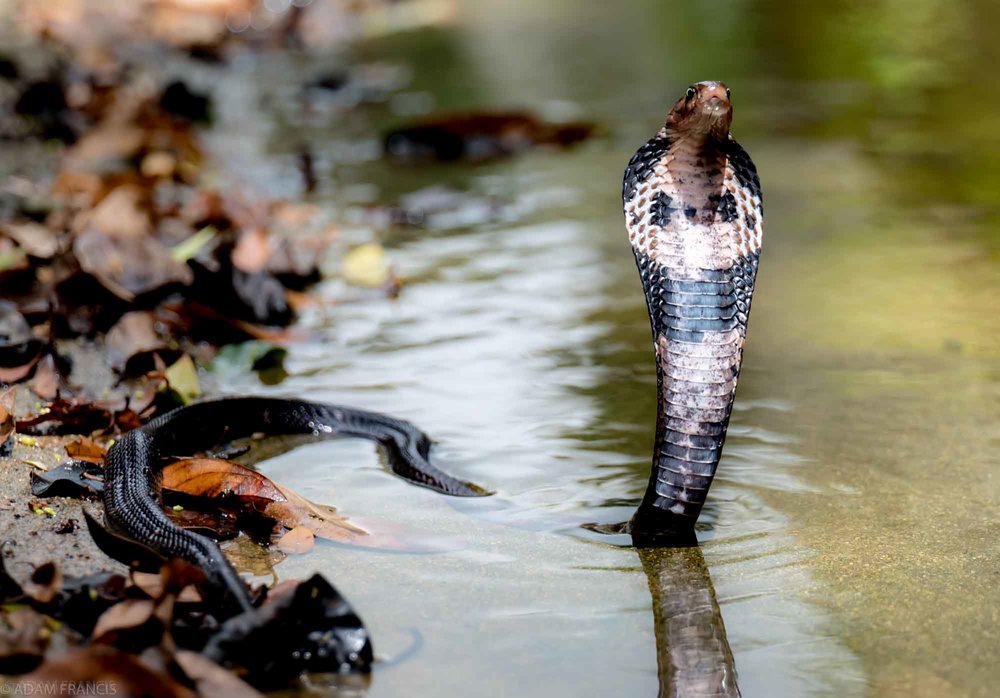Most snakes will not bite you unless provoked, as the man who inadvertently sat on one discovered. But the question which comes to most minds when they meet a snake is: “is it venomous?”
Hongkongers no longer have to rely on the government’s limited database or on Facebook forums to identify serpents they come across, thanks to a new user-friendly website launched last week.
Hong Kong Snake ID was launched as a passion project by two wildlife photographers and nature enthusiasts, Adam Francis and Robert Ferguson. It is the most comprehensive guide dedicated to Hong Kong snakes currently available online, containing a practical guide to venomous snakes, information on what to do if you get bitten, and what to do if you find a snake in your garden.

Ferguson got the idea for the site after receiving many requests to identify snakes from people who saw the guide to venomous snakes in Hong Kong on his wildlife photography blog, WildCreaturesHongKong. He recruited Francis to help build the site.
“It’s quite difficult to find any reliable resources to identify what is a very common animal in Hong Kong,” Ferguson said.
There are about 50 recorded species of snakes in Hong Kong. According to the Agriculture, Fisheries and Conservation Department, among the 14 venomous native land snake species in Hong Kong, eight can inflict bites which are fatal if not treated in time.
Though snake sightings are not uncommon in the city’s rural areas, snake bites are quite rare. A Hong Kong Poison Information Centre spokesperson told HKFP that the centre received fewer than 70 reports of snakebites annually over the last five years.

Jeffrey Fung, a doctor at Tuen Mun Hospital’s ER department, told HKFP it was rare to die from a snake bite in Hong Kong as medical services were readily accessible. He said the bamboo viper is responsible for almost 90 percent of bites, while bites from the Chinese cobra and the many-banded krait are the next most common.
“The last [fatal] case that was recorded was nearly 30 years ago,” he said. In that case, an employee at a snake restaurant was bitten by an imported Russell’s Viper and died because there was no antivenom available.
The site explains in clear, simple language – using photos taken by Francis and Ferguson – how to tell a harmless rat snake from a venomous cobra, and how, though non-venomous, Kukri snakes can deliver slashing cuts with their dagger-like teeth.
The information presented is extensive with dedicated pages detailing 32 species, but there are some that the authors are not giving away.

“One thing that we’re not going to do with this site or any of the information we post is give [an] indication on location, only because there’s all kinds of people out there,” said Francis.
In the first two days of the site’s launch, it received thousands of visits, according to Francis.
See also: Huge snake captured in Shek O village amazes netizens
The information on the blog was compiled from data from Ferguson’s wildlife photography blog WildCreaturesHongKong. A seasoned naturalist who has explored the city’s wilderness for over 25 years, Ferguson said his research was largely based on personal experience and information gathered from friends and online sources. He also consulted two now out-of-print guidebooks published by the colonial government.

Francis said they would like to get the site translated into Chinese in the near future but, for now, they are just working out the kinks and making sure the site is easy to navigate. He said they would also welcome guest contributions for the site’s blog section and hope to get people involved in posting about snakes they come across.
The goal was to create a set of information that the general public can access easily and quickly. The site’s creators also hope to counter misconceptions that snakes are dangerous.
“Snakes don’t need to be feared, people just need to know how to interact with them,” Francis said. He hopes that educating people will also help protect snakes from people who try to kill them out of fear.

For Francis, this mission was justified when he went on an impromptu hike just a day after the site was launched. His joy at discovering a number of bamboo vipers, including one that he filmed eating a gecko, was dampened when he discovered a harmless Greater Green snake lying dead in a culvert below the path. Based on its injuries, Francis deduced that it had been killed by a human.
“Clearly somebody stepped on that, stomped on it on the path and kicked it in there… and they did it because I’m sure they thought it was a bamboo viper,” he said.
The Greater Green is often confused with the similarly-coloured bamboo viper, which is venomous but rarely lethal. They are two of the most common species in Hong Kong.
“It kind of bummed me out a little bit that somebody had killed it clearly thinking it was dangerous when it wasn’t. It made me happy that we launched the site, although it was an unfortunate situation,” Francis said.

“I figured it wouldn’t be able to stop all these incidents from occurring… but maybe some people will get into the information and they get a little more comfortable with the whole snake scenario in Hong Kong and they react differently than they would have.”
For Ferguson, it is becoming increasingly important to educate people as he sees an increasing number of hikers out on the city’s trails. He says snakes in Hong Kong are not aggressive, and usually bites only occur as a defence when humans get too close. He said the people he knows who were bitten by snakes include a woman who put her hand on one when she was opening a gate, someone who stepped on a snake, and a man who unwittingly sat on a snake and was bitten in the bum.
“If you leave snakes alone it is extremely unlikely that you will be bitten. I go out hunting for snakes all the time and I corner them, and they will do almost everything to get out and get away,” Ferguson said.
The site is clear that it is not meant to be a substitute for professional expertise; it advises people against handling snakes and to call emergency services if they are bitten.

Above all, the site’s creators hope it will enable people to appreciate wild creatures and that it will foster a sense of responsibility for the environment.
“The message we want to get out with this site, and with anything else, is that it’s really easy to be safe around and enjoy snakes,” Francis said.
”Advice from Tuen Mun Hospital ER doctor Jeffrey Fung – What to do if you are bitten by a snake”
1. Stay calm, get a safe distance away from the snake (at least the length of its body), and call 999.
2. Clean the wound with water or antiseptic if available. Wrapping it can actually do more harm than good, Fung says.
3. Try to keep the injured area level with the heart (not above or below) and try not to move around.
4. Take a photo of the snake if possible and try to remember what the snake looked like.
5. Fung advised people to always go to the hospital and not try to treat the bite on their own. He said all hospitals in Hong Kong stock antivenom, but may not have antivenom from every species available all the time.
